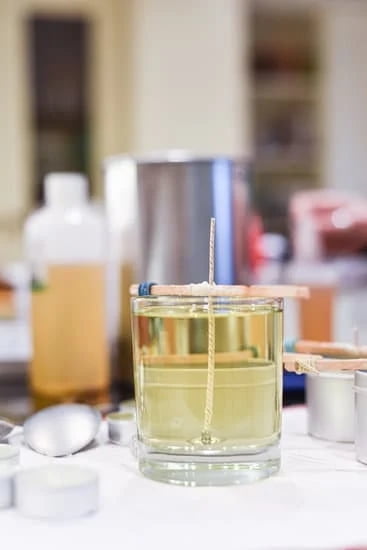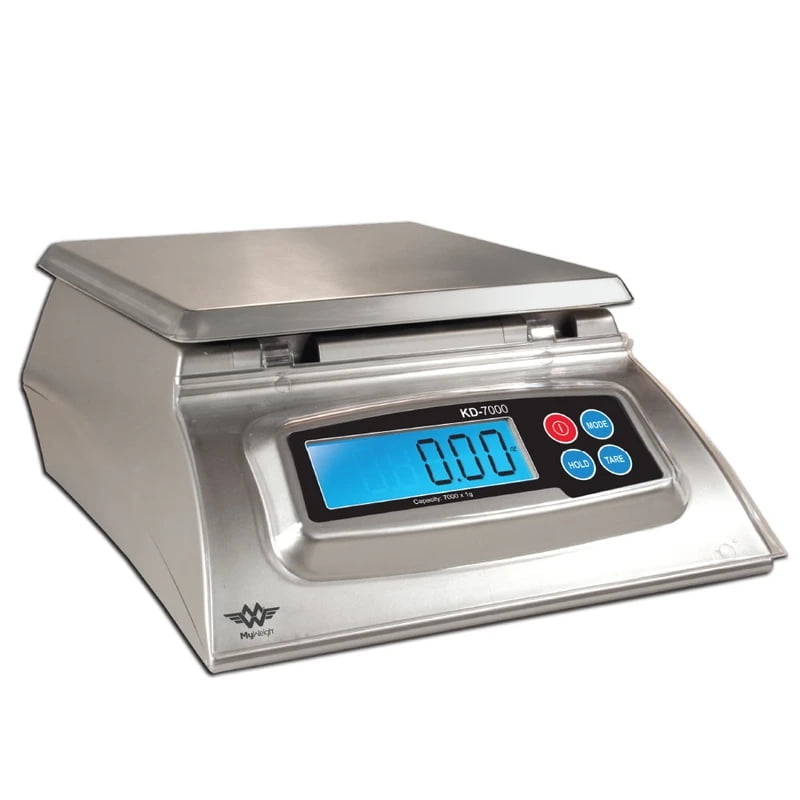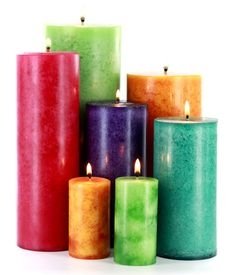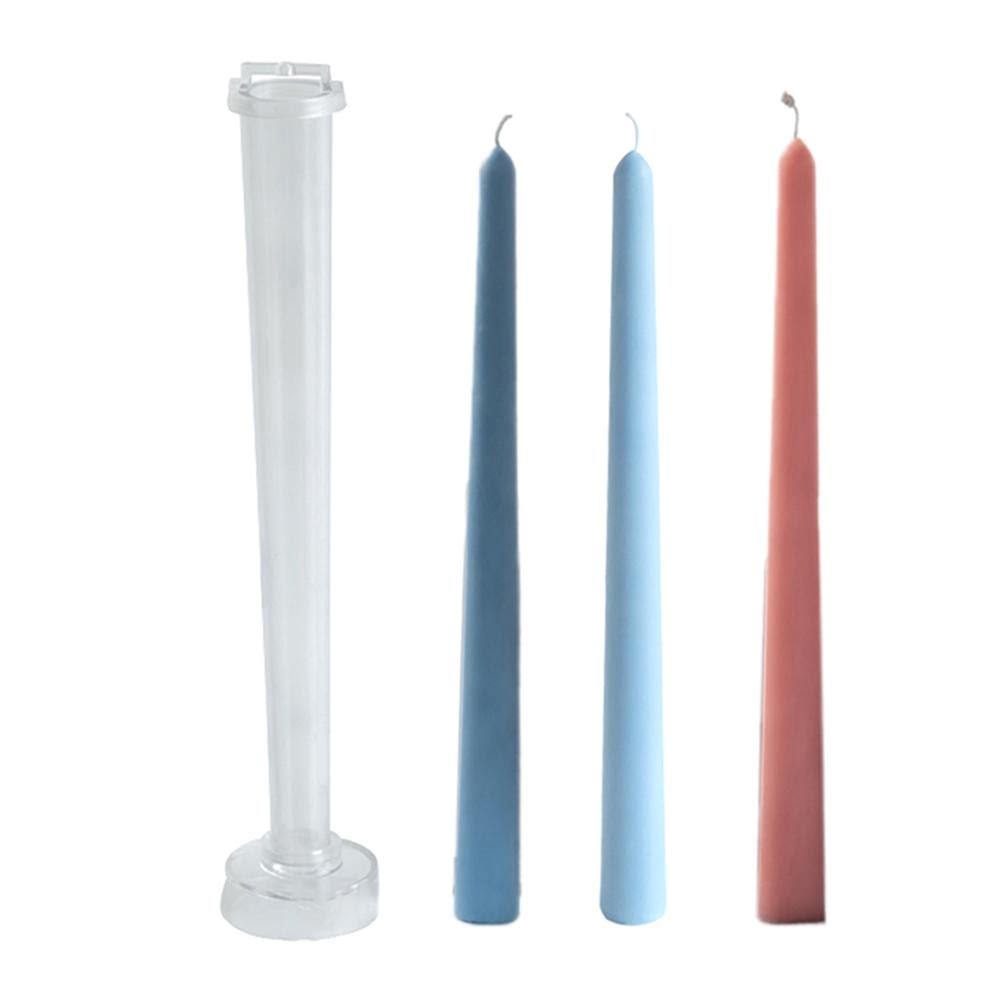The art of professional candle making has gained significant popularity in recent years, with many individuals embracing this craft as a creative and profitable endeavor. However, to truly excel in the field of candle making and produce high-quality candles, it is essential to acquire advanced skills and techniques. In this article, we will delve into the world of professional candle making, providing you with expert tips and insights that will elevate your candle-making craft.
Candle making is not simply about melting wax and pouring it into molds; it is an intricate process that requires attention to detail and a deep understanding of the materials and tools involved. Our comprehensive guide will cover all aspects of professional candle making, from essential tools and materials to advanced techniques for creating unique artistic creations.
To kickstart your journey into the world of professional candle making, it is crucial to have a solid foundation in the fundamentals. By acquiring knowledge about different types of wax, the art of dyeing candles professionally, selecting fragrances judiciously, mastering wicking techniques for optimal burn quality, troubleshooting common issues that may arise during the process, as well as packaging and presenting your handcrafted candles effectively – you can transform simple candle-making hobby into a true profession.
Whether you are a beginner looking to turn your passion into a business or an experienced candle maker seeking ways to improve your craft further, this article will serve as a valuable resource. So let’s embark on this exciting journey together as we explore the art of professional candle making and unlock endless possibilities for creativity and success.
Essential Candle Making Tools and Materials for Professionals
To create high-quality, professional candles, it is crucial to have the right tools and materials at your disposal. In this section, we will delve into the essential candle making tools and materials that professionals rely on for their craft.
One of the most important tools for candle making is a reliable double boiler or melting pot. This allows you to melt your wax safely and efficiently without direct heat. A good quality thermometer is also essential for monitoring the temperature of your wax accurately. This ensures that your candles set properly and burn evenly.
Another indispensable tool for professional candle makers is a sturdy scale. Measuring your ingredients precisely is key to achieving consistent results. A digital scale with both grams and ounces can help you accurately measure your wax, fragrance oils, and additives.
In addition to tools, there are several must-have materials that professionals use for candle making. Quality waxes such as soy wax, beeswax, or paraffin are fundamental for creating beautiful candles. Each type of wax has its own unique properties and melting points, so choose one that suits your specific needs.
Wicks are another vital component in candle making. Zinc core wicks are often favored by professionals due to their stability and clean burn. They come in various sizes to accommodate different candle diameters.
Other materials that professionals use include fragrance oils, color dyes or pigments, additives like stearic acid or vybar, and containers or molds for shaping the candles.
By investing in top-notch tools and materials, professional candle makers can ensure the highest quality end products that meet their customers’ expectations.
Selecting the Perfect Wax for Professional Candle Making
When it comes to professional candle making, selecting the right wax is essential for creating high-quality candles with excellent burn performance and scent throw. There are several types of wax available in the market, each with its own unique characteristics and qualities. In this section, we will explore the different types of wax commonly used by professional candle makers and offer expert advice on choosing the ideal wax for specific candle making projects.
1. Soy Wax: Soy wax is a popular choice among professional candle makers due to its natural and eco-friendly properties. It is derived from soybean oil and produces clean-burning candles with a creamy appearance. Soy wax also has a good scent throw and can hold fragrance oils well, resulting in great aroma diffusion.
2. Paraffin Wax: Paraffin wax is widely used in professional candle making because of its versatility and affordability. It is derived from petroleum and can be easily tinted and scented, allowing for endless creative possibilities. Paraffin candles often have a glossy finish and provide a strong scent throw.
3. Beeswax: Beeswax is a natural and sustainable option that professional candle makers often choose for its unique qualities. It has a pleasant honey-like aroma and produces long-lasting candles with a warm, golden glow. However, beeswax can be more expensive than other waxes, making it suitable for premium or specialty candle lines.
4. Coconut Wax: Coconut wax has gained popularity in recent years as an alternative to other waxes. It offers excellent fragrance retention and provides a smooth, creamy texture to candles. Coconut wax also has a clean burn with minimal soot production.
When selecting the perfect wax for your professional candle making projects, consider factors such as burn time, scent throw, appearance, ease of use, cost, sustainability, and personal preference. Experimenting with different types of waxes can help you find the one that best suits your candles’ desired characteristics. Remember to use high-quality wax from reputable suppliers to ensure consistent results and customer satisfaction.
Mastering Candle Dyeing Techniques for Professional Results
Candle dyeing techniques play a crucial role in achieving professional and visually stunning results in candle making. Whether you are a beginner or an experienced candle maker, mastering the art of coloring candles can elevate your creations to a new level. In this section, we will explore various methods and techniques for achieving vibrant and consistent color results.
One popular method for coloring candles is using liquid dyes. These dyes are specially formulated for candle making and come in a wide range of colors. They are highly concentrated, enabling you to achieve intense and bold shades by adding just a few drops to your melted wax. Liquid dyes are easy to use and allow for precise color control. Additionally, they blend well with different types of waxes, ensuring that your candle has an even and consistent color throughout.
Another technique widely used by professional candle makers is dye blocks or chips. Dye blocks are solid blocks of colored wax that can be shaved or grated into the melted candle wax to achieve the desired color. This method offers versatility as you can mix different colored chips to create custom shades. It also allows for experimentation with layering colors, resulting in unique and visually appealing candles.
To achieve a marbled effect on your candles, you can opt for swirl techniques such as dip-dyeing or swirling colors together in the melted wax before pouring it into the container. These techniques require some practice but can produce beautiful patterns and designs on your candles.
| Technique | Description |
|---|---|
| Liquid Dyes | Highly concentrated dyes that allow for precise color control. |
| Dye Blocks/Chips | Solid blocks of colored wax that can be shaved or grated into the melted wax. |
| Swirl Techniques | Dip-dyeing or swirling colors together to create marbled effects. |
Remember, when dyeing candles, it is important to start with small amounts of dye and gradually add more until you achieve the desired color intensity. It is always easier to add more dye than to remove excess color.
Mastering candle dyeing techniques requires patience, experimentation, and a keen eye for aesthetics. With practice and attention to detail, you can create professional-looking candles that are both visually appealing and a delight to the senses.
Fragrance Selection and Blending Tips for Professional Candle Makers
Professional Candle Making Tips:
5. Fragrance Selection and Blending Tips for Professional Candle Makers Choosing the right fragrance oils is a crucial aspect of professional candle making. The scent of a candle can greatly impact its appeal and marketability. To create high-quality and unique scented candles, professional candle makers need to consider several factors when selecting and blending fragrances.
When selecting fragrance oils, it is important to choose high-quality oils that are specifically formulated for candle making. These oils are designed to withstand the heat generated by burning candles and retain their scent throughout the entire burn time. It is recommended to purchase fragrance oils from reputable suppliers who provide detailed information about the oil’s performance in candles.
To create signature scents, professional candle makers often blend different fragrance oils together. Blending allows for endless possibilities in creating unique combinations that differentiate their candles from others in the market. When blending fragrances, it is important to keep in mind the balance between the top, middle, and base notes of each scent. Experiment with small test batches before committing to a large batch to ensure the desired scent is achieved.
To help professional candle makers enhance their skills in fragrance selection and blending, here are some tips:
1. Start with a strong base note: Choose a base note that will anchor your fragrance blend and provide depth and warmth to your candles.
2. Consider complementary scents: Select fragrances that work well together and complement each other’s characteristics. For example, blending floral notes with fruity or spicy notes can create interesting aroma profiles.
3. Keep notes organized: Maintain a record or notebook containing detailed information about your fragrance blends, including proportions used, results achieved, and customer feedback. This will help you reproduce successful blends consistently.
4. Test extensively: Before releasing a new fragrance blend, conduct thorough testing to ensure it performs well in terms of burn quality, throw (the release of the scent), and overall customer satisfaction.
By carefully selecting and blending fragrance oils, professional candle makers can create captivating scents that elevate their candles to a whole new level. Experiment with different combinations and explore the endless possibilities that come with creating unique fragrances.
| Tips for Fragrance Selection and Blending |
|---|
| Start with a strong base note |
| Consider complementary scents |
| Keep notes organized |
| Test extensively |
Advanced Candle Making Techniques for Artistic Creations
Candle making is not just about creating functional and fragrant candles; it can also be a form of artistic expression. With advanced candle making techniques, you can elevate your craft to create unique and visually stunning candles that are true works of art. In this section, we will explore some of the advanced techniques that professional candle makers use to create artistic creations.
One popular technique is layered candles, where different colored waxes are poured in separate layers to create a gradient effect. To achieve this, start by pouring a layer of melted wax into the container and allowing it to cool and harden. Once it has set, repeat the process with another layer of a different color.
Repeat this step until you have achieved the desired number of layers. For more precision in creating clean lines between layers, using a heat gun or blow dryer on low heat can help smooth out any uneven edges before adding the next layer.
Embedding objects into candles is another way to add artistic elements to your creations. This technique involves placing small objects like dried flowers, seashells, or even decorative charms into the melted wax before it solidifies. To do this, pour a small amount of melted wax into the bottom of the container and let it cool slightly.
Then, carefully place your chosen objects onto the cooled wax and gently press them down to ensure they are embedded securely. Continue pouring melted wax over the embedded objects until they are fully covered.
Creating various candle shapes can also add an artistic touch to your candles. One technique for creating unique shapes is using silicone molds specifically designed for candle making. Pour your melted wax into these molds and allow them to cool completely before removing them from the mold. Another method is hand-carving candles using a knife or special carving tools. Start with a pillar candle or block of hardened wax and carefully carve out intricate designs or shapes.
By mastering these advanced techniques for artistic candle making, you can take your craft to the next level and create stunning candles that are not only functional but also visually captivating. Experiment with different techniques, colors, and designs to let your creativity shine through in every candle you make.
Tips for Mastering Advanced Candle Making Techniques
– Practice patience and precision when working with advanced techniques as they require more time and attention to detail.
– Experiment with different color combinations, layer thicknesses, and objects to embed in your candles to discover unique artistic effects.
– Consider safety precautions when using techniques like hand-carving; always work in a well-ventilated area and handle sharp tools with care.
– Join online communities or attend workshops dedicated to advanced candle making techniques to learn from experienced artisans and gain inspiration from their work.
Perfecting the Art of Candle Wicking
Why Proper Wick Selection is Crucial for Candle Making
When it comes to candle making, one of the most important factors to consider is selecting the right wick for your candles. The wick plays a crucial role in achieving optimal burn quality and ensuring a safe and enjoyable experience for users.
Choosing the wrong wick can result in issues such as poor scent throw, tunneling, or uneven burning. Therefore, it is essential to understand the significance of proper wick selection and learn about different types, sizes, and considerations for different candle types.
The Different Types of Wicks for Professional Candle Making
There are several types of wicks available in the market, each designed for specific purposes and candle types. Some common types include cotton wicks, wooden wicks, zinc-core wicks, and paper-core wicks. Cotton wicks are versatile and suitable for many candle types. They come in various sizes and thicknesses to accommodate different container sizes or pillar candles.
Wooden wicks are known for their crackling sound when lit, adding a cozy ambiance to the candle experience. These wicks are typically used with soy or vegetable-based wax due to their natural composition. Zinc-core and paper-core wicks are primarily used for large pillar candles or specialty-shaped candles that require additional support.
Considerations for Selecting the Right Wick Size
Besides choosing the correct type of wick, selecting the appropriate size is equally important. The size of the wick determines how efficiently the candle burns. A too small wick may result in poor melt pools or tunneling since it cannot generate enough heat to melt all the wax evenly. On the other hand, a too large wick may cause excessive flames leading to sooting or smoking.
To choose the right wick size, consider factors such as diameter of your container or mold, desired burn time, type of wax used, and fragrance load. Various wick size charts and tools are available to help you determine the best wick size based on these factors. Additionally, conducting burn tests is highly recommended to ensure the wick performs optimally with your specific candle recipe.
By paying attention to proper wick selection for different candle types and sizes, you can achieve an excellent burn quality that promotes even melting, strong scent throw, and a beautiful flame. Investing time in understanding the characteristics of different wicks will significantly contribute to elevating your candle making craft to a professional level.
Troubleshooting Common Candle Making Issues
Identifying and Addressing Uneven Burning
One of the most common issues faced by professional candle makers is uneven burning. This occurs when the wax melts unevenly, causing the candle to burn faster on one side and creating an unsightly appearance. To troubleshoot this problem, it is essential to identify the potential causes.
Uneven burning can be caused by several factors, including improper wick size, poor wax formulation, or an uneven pouring technique. If the wick is too small for the diameter of the candle, it may not generate sufficient heat to melt the entire surface evenly. In contrast, a wick that is too large can create excess heat and cause tunneling.
To address this issue, it is crucial to select the right wick size for your candle. Consider experimenting with different wick sizes and types to find the perfect match for your specific candle. Additionally, ensuring that you are using high-quality wax that has been properly formulated for candles can help improve burn quality.
Another method to achieve even burning is by practicing proper pouring techniques. When pouring the melted wax into your container or mold, make sure to pour slowly and consistently. Avoid pouring too quickly or agitating the hot wax as this can result in air bubbles and uneven distribution.
Solving Lack of Scent Throw
A major disappointment for professional candle makers is when their candles do not emit enough fragrance when burned. This lack of scent throw can significantly impact the quality of the candle and diminish its appeal to customers.
The first step in troubleshooting this issue is examining the fragrance load in your candles. The scent load refers to the percentage of fragrance oil used in relation to the amount of wax. If you have used an insufficient amount of fragrance oil, it may result in a weak scent throw.
To solve this problem, consider increasing the fragrance load gradually until you achieve your desired scent strength while making sure not to exceed the recommended usage rate for the fragrance oil you are using. It is important to note that different fragrance oils have varying usage rates, so be sure to follow the manufacturer’s guidelines.
Additionally, the type and quality of fragrance oil used can greatly impact scent throw. Opt for high-quality fragrance oils specifically formulated for candle making. These oils are designed to disperse well throughout the wax and provide a strong, long-lasting scent when burned.
Addressing Tunneling
Tunneling refers to when a candle burns straight down the middle, leaving a ring of unused wax around the edges. This can occur when the wick is not properly sized or if the candle is not burned long enough during each use.
To troubleshoot and prevent tunneling, it is crucial to select the right wick size for your candle diameter. A wick that is too small may create a weak flame, causing tunneling. On the other hand, a wick that is too large can generate excess heat and melt more wax than necessary, resulting in uneven burning.
Additionally, it is essential to properly burn your candles during each use. When lighting your candle for the first time, allow it to burn until the entire surface has melted into a pool of liquid wax. This will help prevent tunneling by ensuring an even melt pool across the entire surface.
If you notice tunneling occurring in your candles, there are methods to correct this issue as well. One solution is known as “tunnel-breaking,” where you gently scrape away some of the built-up wax around the sides of the container and then relight the candle. This encourages an even burn and helps eliminate tunneling over time.
By understanding and addressing these common issues in professional candle making, you can improve your craft and produce candles that burn evenly, emit delightful scents, and offer an exceptional experience for customers.
Packaging and Presenting Your Professional Handcrafted Candles
When it comes to professional candle making, packaging and presentation play a crucial role in elevating the overall experience for customers. The way your handcrafted candles are packaged and presented can greatly influence their perceived value and desirability. In this section, we will explore some creative ideas and offer valuable tips on how to package and present your professional handcrafted candles.
One important aspect to consider when packaging your candles is branding. Establishing a consistent brand identity can help distinguish your products from others in the market. This can be achieved through the use of unique logos, color schemes, and overall design aesthetic. Incorporating these elements into your packaging will not only create a cohesive look but also help customers identify and remember your brand.
In addition to branding, labeling is another key element of packaging professional handcrafted candles. Labels should include important information such as the candle’s fragrance, burn time, ingredients, and any other relevant details. Clear and informative labels not only provide essential product information to consumers but also contribute to the overall professionalism of your brand.
Beyond branding and labeling, the visual appeal of your final product is equally important when presenting your handcrafted candles. Consider investing in high-quality containers that showcase the beauty of your candles while protecting them during transportation or display. Glass jars or tins with elegant finishes can add a touch of sophistication to your candles and make them more enticing to potential customers.
Furthermore, creativity in presentation goes a long way in catching customers’ attention. Consider adding decorative elements such as ribbons, bows or charms that reflect the style or theme of each candle collection. Experiment with different wrapping techniques like tissue paper or organza bags to create an unforgettable unwrapping experience for customers.
By paying attention to every detail when it comes to packaging and presenting your professional handcrafted candles, you are guaranteed to make a lasting impression on customers while enhancing the overall value of your brand. Remember that thoughtful branding, clear labeling, high-quality containers, and creative presentation can transform your handcrafted candles into coveted pieces that customers will be excited to purchase and display in their homes.
Conclusion
In conclusion, by incorporating the professional candle making tips outlined in this article, you can elevate your craft to a whole new level. The journey to becoming a professional candle maker involves acquiring advanced skills, utilizing the right tools and materials, and mastering various techniques.
Firstly, it is important to ensure you have the essential candle making tools and materials necessary for professional results. By understanding the purpose and functionality of each item, you can create candles with precision and consistency.
Furthermore, selecting the perfect wax plays a crucial role in candle making. Consider the different characteristics of various waxes and choose one that suits your specific projects. Additionally, mastering candle dyeing techniques will allow you to add vibrant color to your creations.
Another aspect to consider is fragrance selection and blending. By choosing high-quality fragrance oils and experimenting with different combinations, you can create unique scents that become your signature as a professional candle maker.
To truly excel in this craft, explore advanced techniques such as layered candles or embedding objects within them. These techniques require practice and patience but will result in stunning artistic creations that set you apart from other candle makers.
Proper wick selection is also critical for achieving optimal burn quality in candles. Understanding different wick types, sizes, and considerations for various candle types will help avoid common problems such as uneven burning or tunneling.
Lastly, don’t forget about packaging and presentation. Make sure to brand your candles with labels that reflect your professionalism and invest time into creating visually appealing final products.
By implementing these tips into your own candle making journey, you will be well on your way towards elevating your craft to a professional level. Enjoy the process of learning new skills, experimenting with different techniques, and creating beautiful candles that bring joy to others.

Welcome to my candle making blog! In this blog, I will be sharing my tips and tricks for making candles. I will also be sharing some of my favorite recipes.





